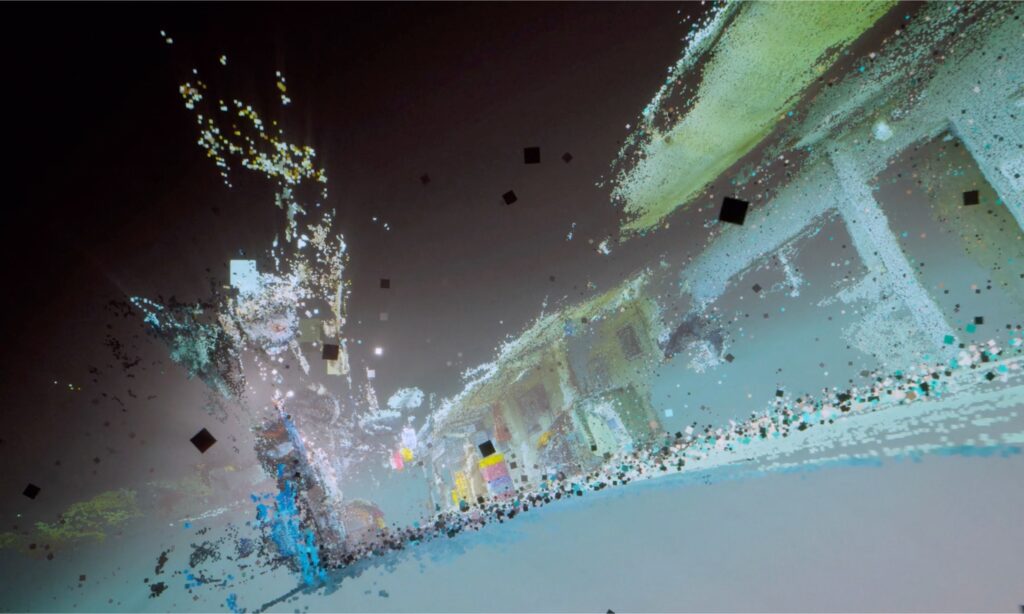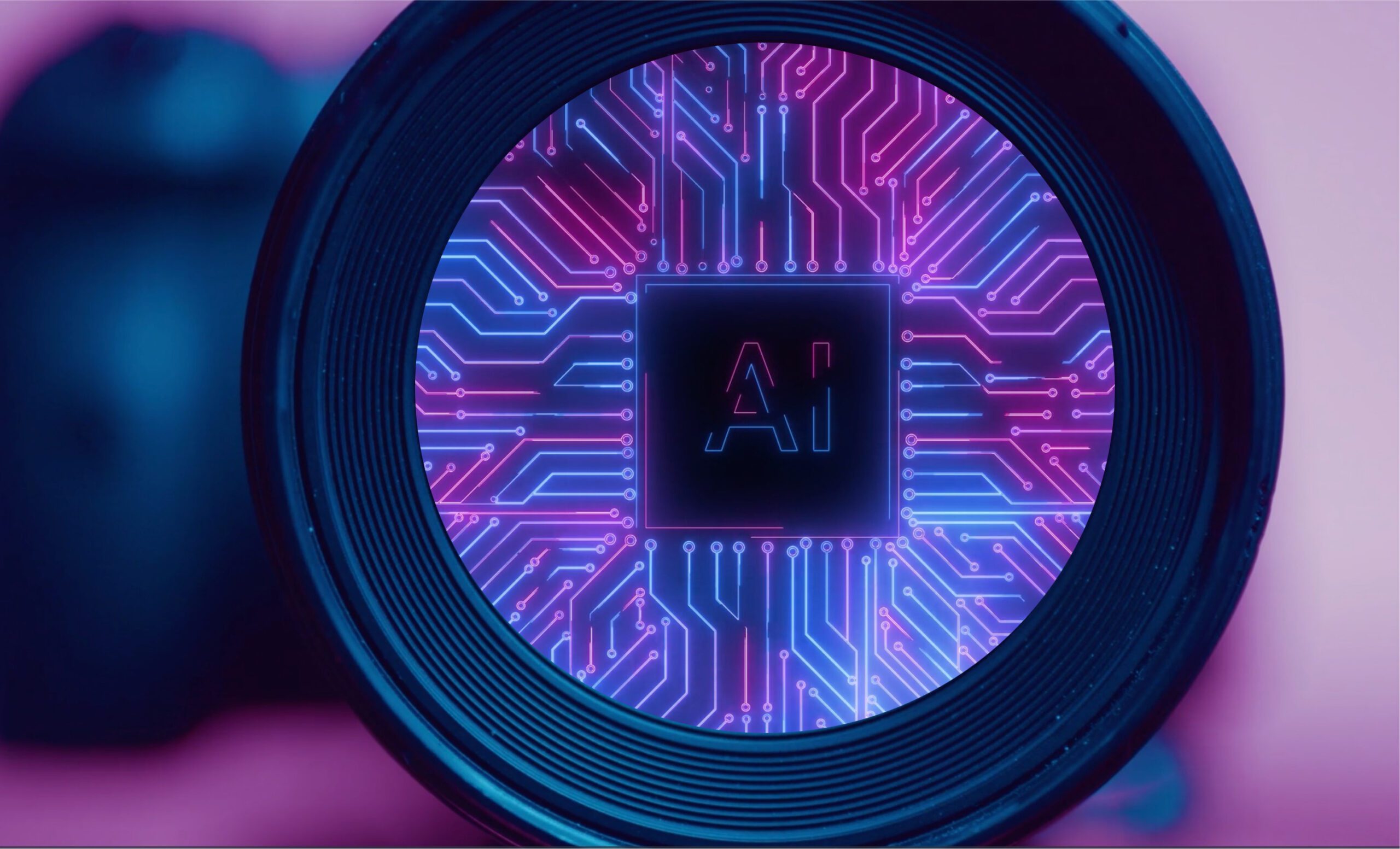Artificial Intelligence (AI) is revolutionising the video production industry, introducing unprecedented advancements and opportunities. This segment delves into how AI is employed in video production, significantly enhancing efficiency, accuracy, and visual appeal. AI’s impact on video production is profound, transforming traditional processes and opening up new avenues for innovation. Join us as we explore how AI can be used in video production, marking a new era of technological integration in creating captivating video content.

Advancements in AI Technology for Video Production
In recent years, there have been significant advancements in AI technology that have transformed the video production process. AI is being used to automate tasks, improve editing capabilities, and enhance the overall quality of videos. This section will explore the various ways in which AI is being utilised in video production and the benefits it brings.
Automated Video Editing
One of the significant ways AI is revolutionising video production is through automated video editing. AI algorithms can analyse video footage and automate tasks such as video trimming, object detection, and scene selection, resulting in faster and more accurate video editing.
| Traditional Video Editing | AI-powered Video Editing |
|---|---|
| Manual video trimming | Automated video trimming based on predefined criteria, such as facial recognition or scene changes |
| Manual object selection and removal | Automated object detection and removal based on predefined criteria |
| Manual scene selection | Automated scene selection based on predefined criteria, such as emotion or action detection |
AI-powered video editing not only saves time and effort but also produces more accurate results. As AI algorithms continue to develop, the video editing process is expected to become even more efficient and sophisticated.
Enhancing Visual Effects
AI is also being utilised to enhance the visual effects in video production, resulting in more realistic and high-quality effects. AI algorithms can generate effects such as motion tracking, object removal, and virtual backgrounds, making videos visually captivating.
For example, AI-powered motion tracking can track the movement of objects in a video and add visual effects, such as a trail or a glow, to enhance the video’s overall look. Similarly, AI-powered object removal can remove objects from a video and replace them with virtual backgrounds, resulting in a seamless and visually appealing video.
Content Creation and Personalisation
AI is being used to create personalised and engaging video content through the analysis of user data, preferences, and behavior. AI algorithms can analyse data and generate customised videos that increase viewer engagement and satisfaction.
For example, a music video streaming service can use AI to analyse a user’s music preferences and create a customised playlist of videos. Similarly, an e-learning platform can use AI to analyse a learner’s behavior and generate personalised video tutorials that cater to their learning style.
Video Analysis and Insights
AI is being used to analyse video data and extract valuable insights. AI algorithms can detect patterns, emotions, and demographics to provide valuable information for content creators and marketers.
For example, a content creator can use AI to analyse video engagement data and gain insights on how to improve their content. Similarly, a marketer can use AI to analyse video data and gain insights on how to target their audience better.
Overall, AI technology is transforming the video production process and offering numerous benefits and opportunities. As AI continues to evolve, it is expected to bring further advancements and innovation to the video production landscape.
AI in Automated Video Editing
Video editing is a crucial aspect of video production, and AI technology has made it possible to automate several tasks, resulting in more efficient and accurate editing.
One of the most significant benefits of AI in video production is the ability to automatically trim video footage. AI algorithms can analyse video content and detect unnecessary segments, resulting in significant time savings and a more concise final product.
AI technology can also identify specific objects within a video, such as people or products, and automatically select the best shots to include in the final edit. This not only speeds up the editing process but also enhances the overall quality and impact of the video.
Another area where AI is transforming video editing is through scene selection. By analysing the content and context of each scene, AI algorithms can predict which shots will have the most significant impact on the viewer and select them accordingly, resulting in a more engaging and compelling video.
Overall, AI in video production has revolutionised the editing process by automating tasks, improving accuracy, and enhancing the final product’s quality. As AI technology continues to advance, we can expect to see even more significant improvements in the video editing process.
Enhancing Visual Effects with AI
The benefits of AI in video production are numerous, and one of the areas where AI technology really shines is in enhancing visual effects. With the use of AI algorithms, videos can now feature realistic and high-quality effects that were once impossible to achieve.
How AI is Enhancing Visual Effects
AI algorithms can generate a variety of visual effects, such as motion tracking, object removal, and virtual backgrounds, making videos visually captivating. Motion tracking technology allows for precise and automatic tracking of moving objects in a video, resulting in smooth and seamless visual effects. Object removal technology can easily remove unwanted objects from a video, such as wires or unwanted people, resulting in a cleaner and more professional-looking video. Virtual background technology allows for the replacement of a video’s background with a computer-generated image or video, giving viewers a more immersive experience.
The Benefits of AI in Video Production
The use of AI technology in video production greatly benefits content creators and video marketers. By utilising AI-generated visual effects, videos can be made more engaging and compelling, capturing viewers’ attention and increasing their interest in the video. This can result in higher viewer engagement and satisfaction, as well as increased brand awareness and loyalty.
Moreover, AI-generated visual effects can be produced quickly and efficiently, saving time and resources for content creators. By automating the process of generating visual effects, content creators can focus on other aspects of the video production process, such as scripting and directing. This efficiency also translates to cost savings, as the need for human resources and specialised equipment is reduced.
As AI technology continues to improve, we can expect even more impressive visual effects to be generated, further pushing the boundaries of what is possible in video production. The benefits of AI in video production are clear, and the technology is poised to play an increasingly important role in the industry in the coming years.
AI for Content Creation and Personalisation
In the realm of video production, AI technology has made significant strides in enhancing the creation and personalisation of video content. With the ability to analyse user data, behavior, and preferences, AI algorithms are able to generate customised videos that result in increased viewer engagement and satisfaction.
One of the key benefits of AI in video production is its ability to create personalised video content at scale. This means that content creators can produce videos that are tailored to individual users, even if they have a large audience. This is made possible by AI algorithms that analyse vast amounts of data from user interactions, such as likes, shares, and comments, to determine their interests and preferences.
Benefits of AI in Video Production
- Increased engagement: With AI-generated personalised content, viewers are more likely to engage with the video, resulting in increased watch time and improved metrics.
- Efficiency: AI algorithms can produce personalised content at scale, eliminating the need for manual video editing and reducing production costs.
- Improved targeting: By analysing viewer data, AI algorithms can provide insights into which types of video content are most popular among specific demographics, enabling content creators to tailor their content to specific audiences.
Furthermore, AI technology can also be used to generate alternate versions of video content optimised for different platforms, such as social media or mobile devices. By analysing platform-specific metrics, AI algorithms can create videos that are more likely to be viewed and shared on specific platforms.
Overall, the benefits of AI in video production for content creation and personalisation are numerous. By utilising AI algorithms to analyse viewer data and preferences, content creators can produce personalised and engaging videos that result in increased viewer engagement and satisfaction. As AI technology continues to evolve, we can expect to see further advancements in personalised video content production.
AI for Video Analysis and Insights
In the video production industry, AI technology is being used to analyse videos and extract valuable insights. AI algorithms can detect patterns, emotions, and demographics to provide content creators and marketers with valuable information. This is especially relevant in today’s digital age, where data-driven insights are a powerful tool for creating effective video content.
Emotion Detection
Emotion detection is one of the key areas where AI technology is providing valuable insights for video production. By analysing facial expressions, tone of voice, and body language, AI algorithms can detect different emotions in videos. This data can be used to determine how viewers are responding to video content, and whether it is resonating with them emotionally.
For example, AI can detect when a viewer is laughing, crying, or feeling happy or sad while watching a video. This information can be used by content creators to make adjustments to their videos to better engage their audiences.
Content Analysis
AI algorithms can also provide insights into the content of videos. Text recognition algorithms can identify words and phrases in videos, providing information about the topics being discussed. This can be especially useful for analysing video content from news broadcasts, interviews, and speeches.
AI can also analyse the visual elements of videos. Object detection algorithms can identify and track objects in videos, providing information about what is being shown on the screen. This can be particularly useful for analysing product placement or assessing the effectiveness of advertising campaigns.
Demographic Analysis
AI technology can also analyse the demographics of video audiences. By analysing viewer data, AI algorithms can determine the age, gender, and location of viewers. This information can be used to create targeted video content that resonates with specific audiences, improving engagement and increasing ROI.
The data from demographic analysis can be used to create targeted advertising campaigns or to adjust the style and tone of video content to better connect with specific audiences. By using AI technology to analyse video data, content creators and marketers can make data-driven decisions that result in more effective and engaging video content.
Conclusion
In conclusion, the impact of AI on the video production industry cannot be overstated. As we have explored in this article, AI technology has brought numerous benefits and opportunities, transforming various aspects of the video production process.
Advancements in AI technology have made it possible to automate tasks, improve editing capabilities, and enhance the overall quality of videos. By using AI algorithms to automate video editing, content creators can save time and increase efficiency, resulting in more accurate and consistent videos.
AI is also being utilised to enhance visual effects in video production. AI algorithms can generate realistic and high-quality effects, such as motion tracking, object removal, and virtual backgrounds, making videos visually captivating and engaging. By personalising videos using AI algorithms to analyse user data and preferences, content creators can increase viewer engagement and satisfaction, resulting in a more loyal audience.
Moreover, AI is being used to analyse video data and extract valuable insights. AI algorithms can detect patterns, emotions, and demographics, providing valuable information for content creators and marketers. By using AI for video analysis, content creators can gain insights into viewer behaviour, preferences, and interests, resulting in more targeted and effective content.
As AI continues to evolve, it is expected to bring further advancements and innovation to the video production landscape. The opportunities offered by AI in video production are substantial, and content creators and marketers who harness its power stand to reap significant rewards.
The future of the video production industry is exciting, and we look forward to seeing how AI will shape it in the years to come.
FAQ
How can AI be used in video production?
AI is being used in video production to automate tasks, improve editing capabilities, enhance visual effects, personalise content, and analyse video data for valuable insights. It offers benefits such as increased efficiency, improved quality, and enhanced viewer engagement.
What advancements in AI technology have impacted video production?
Advancements in AI technology have revolutionised video production by enabling tasks automation, improving editing capabilities, and enhancing overall video quality. AI algorithms are now capable of generating realistic visual effects, analysing user data for personalised content, and extracting valuable insights from video data.
How is AI being used in automated video editing?
AI algorithms are being used in automated video editing to perform tasks such as video trimming, object detection, and scene selection. This automation leads to more efficient and accurate editing processes, saving time and effort for video production professionals.
How does AI enhance visual effects in video production?
AI enhances visual effects in video production by generating realistic and high-quality effects such as motion tracking, object removal, and virtual backgrounds. These AI algorithms improve the overall visual appeal of videos, making them more captivating for viewers.
How does AI contribute to content creation and personalisation in video production?
AI contributes to content creation and personalisation in video production by analysing user data, preferences, and behavior. This analysis enables AI algorithms to generate customised videos that cater to individual viewers, increasing viewer engagement and satisfaction.
How does AI help in video analysis and insights?
AI helps in video analysis and insights by analysing video data to detect patterns, emotions, and demographics. This analysis provides valuable information for content creators and marketers, allowing them to make data-driven decisions and optimise their video production strategies.





